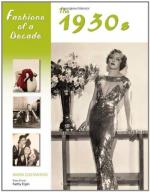|
This section contains 1,435 words (approx. 5 pages at 300 words per page) |

|
Budgeting.
In the 1930s more than half of American families earned between $500 and $1,500 per year. In 1935-1936 the median family income was $1,160. An income of $2,000 per year guaranteed a comfortable lifestyle and put a household at the top 10 percent of incomes. On an average annual income of roughly $1,000, most families had between $20 and $25 per week for food, clothing, and shelter. Budgeting and stretching scarce resources was essential. In adapting to economic deprivation families used two strategies: they curtailed expenses and found alternative sources of income. Expenses were curtailed by using family labor to produce goods that used to be store bought, such as food, clothing, and home repairs. This reponsibililty typically fell on women, who did most of the household spending. The government gave guidelines for a family budget, recommending setting aside 35 percent of the family income for food...
|
This section contains 1,435 words (approx. 5 pages at 300 words per page) |

|




